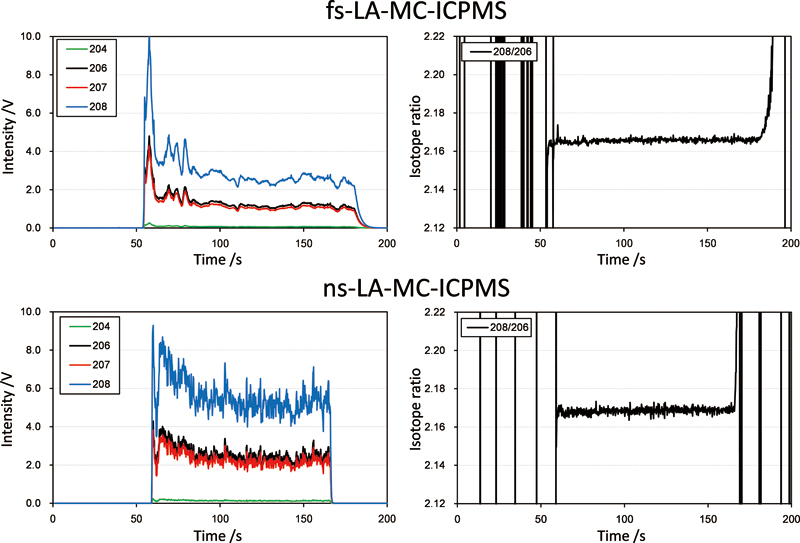Abstract
The analytical performance of 265 nm femtosecond laser ablation (fs-LA) and 213 nm nanosecond laser ablation (ns-LA) systems coupled with multi-collector inductively coupled plasma mass spectrometry (MC-ICPMS) for Pb isotope ratio measurements of solder were compared. Although the time-resolved signals of Pb measured by fs-LA-MC-ICPMS showed smoother signals compared to those obtained by ns-LA-MC-ICPMS, similar precisions on Pb isotope ratio measurements were obtained between them, even though their operating conditions were slightly different. The mass bias correction of the Pb isotope ratio measurement was carried out by a comparison method using a Pb standard solution prepared from NIST SRM 981 Pb metal isotopic standard, which was introduced into the ICP by a desolvation nebulizer (DSN) via a dual-sample introduction system, and it was successfully demonstrated for Pb isotope ratio measurements for either NIST 981 metal isotopic standard or solder by fs-LA-MC-ICPMS since the analytical results agreed well with the certified value as well as the determined value within their standard deviations obtained and the expanded uncertainty of the certified or determined value. The Pb isotope ratios of solder obtained by ns-LA-MC-ICPMS also showed agreement with respect to the determined value within their standard deviations and expanded uncertainty. From these results, it was evaluated that the mass bias correction applied in the present study was useful and both LA-MC-ICPMS could show similar analytical performance for the Pb isotope ratio microanalysis of metallic samples such as solder.



